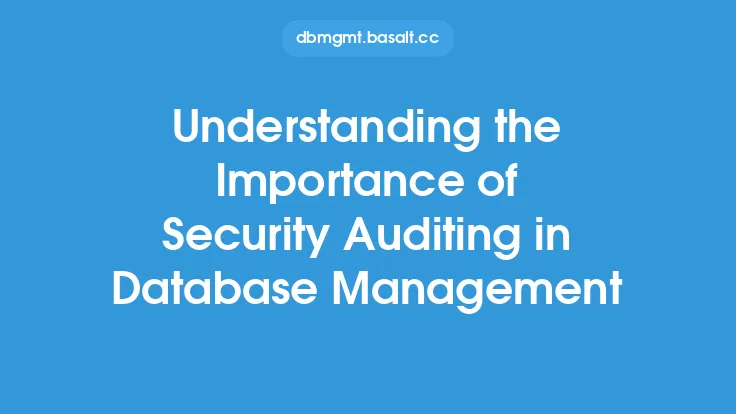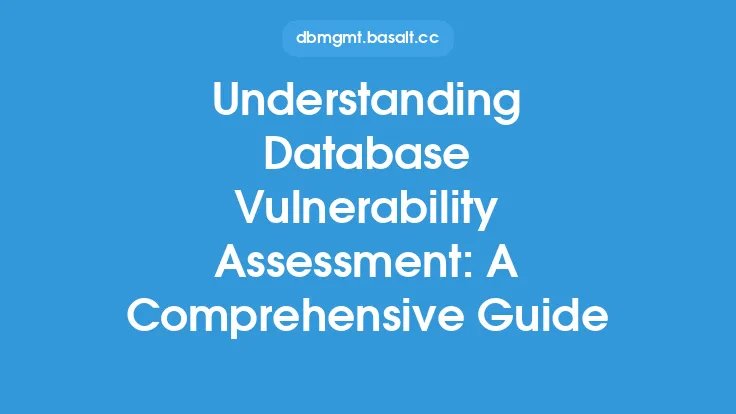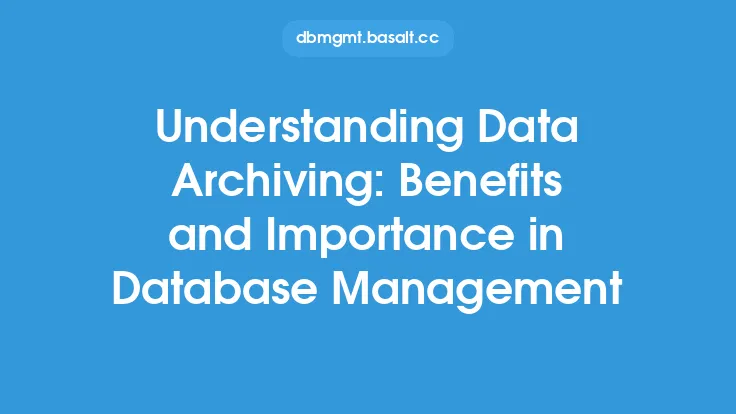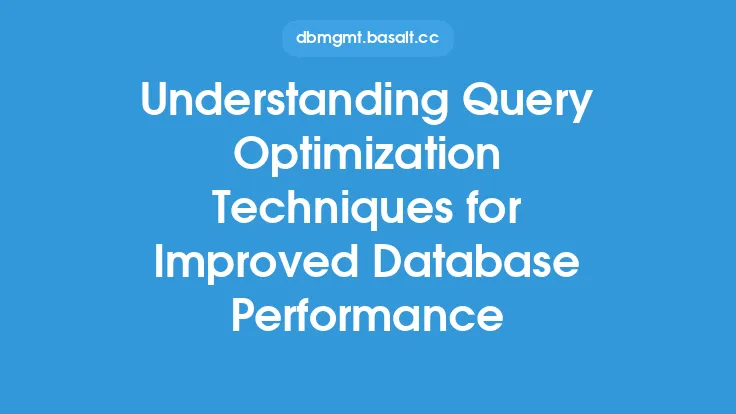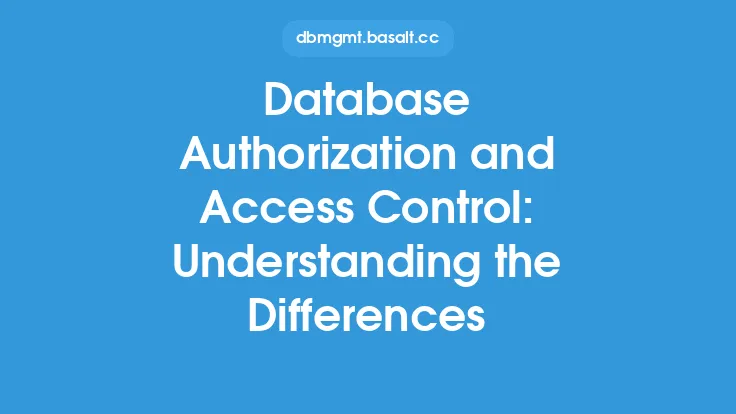Database authentication is a critical component of database security, as it ensures that only authorized users can access and manipulate the data stored in a database. Authentication is the process of verifying the identity of a user, and it is a crucial step in preventing unauthorized access to sensitive data. In this article, we will delve into the different database authentication methods, their strengths and weaknesses, and the underlying technologies that support them.
Introduction to Database Authentication Methods
Database authentication methods can be broadly categorized into two main types: traditional authentication methods and modern authentication methods. Traditional authentication methods rely on a username and password combination, while modern authentication methods use more advanced techniques, such as biometric authentication, smart cards, and Kerberos authentication. Each of these methods has its own advantages and disadvantages, and the choice of authentication method depends on the specific requirements of the database and the organization.
Traditional Authentication Methods
Traditional authentication methods are the most commonly used authentication methods in databases. These methods rely on a username and password combination to verify the identity of a user. The most common traditional authentication methods include:
- Username and password authentication: This is the most basic form of authentication, where a user provides a username and password to access the database.
- Hash-based authentication: In this method, the password is hashed and stored in the database. When a user attempts to log in, the provided password is hashed and compared to the stored hash.
- Challenge-response authentication: In this method, the database sends a challenge to the user, and the user must respond with a valid response to access the database.
Modern Authentication Methods
Modern authentication methods are more advanced and secure than traditional authentication methods. These methods use various techniques, such as biometric authentication, smart cards, and Kerberos authentication, to verify the identity of a user. The most common modern authentication methods include:
- Biometric authentication: This method uses unique physical characteristics, such as fingerprints, facial recognition, or iris scans, to verify the identity of a user.
- Smart card authentication: This method uses a smart card, which is a small computer chip embedded in a plastic card, to store and verify the identity of a user.
- Kerberos authentication: This method uses a ticket-based system to verify the identity of a user. The user requests a ticket from the Kerberos server, which is then used to access the database.
Authentication Protocols
Authentication protocols are used to facilitate communication between the client and the server during the authentication process. The most common authentication protocols include:
- SQL authentication: This protocol is used for SQL databases and relies on a username and password combination to verify the identity of a user.
- LDAP authentication: This protocol is used for Lightweight Directory Access Protocol (LDAP) directories and relies on a username and password combination to verify the identity of a user.
- Kerberos protocol: This protocol is used for Kerberos authentication and relies on a ticket-based system to verify the identity of a user.
Database Authentication Mechanisms
Database authentication mechanisms are used to implement authentication methods in a database. The most common database authentication mechanisms include:
- Authentication modules: These are software components that implement authentication methods, such as username and password authentication or biometric authentication.
- Authentication plugins: These are software components that extend the functionality of a database management system to support additional authentication methods.
- Authentication frameworks: These are software frameworks that provide a structured approach to implementing authentication methods in a database.
Identity Management
Identity management is the process of managing user identities and their associated credentials. In the context of database authentication, identity management involves managing user accounts, passwords, and other credentials. The most common identity management techniques include:
- User account management: This involves creating, modifying, and deleting user accounts in a database.
- Password management: This involves managing passwords, including password policies, password expiration, and password reset.
- Credential management: This involves managing credentials, such as certificates and smart cards, used for authentication.
Authentication and Authorization
Authentication and authorization are two related but distinct concepts in database security. Authentication is the process of verifying the identity of a user, while authorization is the process of determining what actions a user can perform on a database. The most common authorization techniques include:
- Role-based access control (RBAC): This involves assigning users to roles, which define the actions that can be performed on a database.
- Attribute-based access control (ABAC): This involves assigning attributes to users, which define the actions that can be performed on a database.
- Mandatory access control (MAC): This involves assigning a security label to users and objects, which defines the actions that can be performed on a database.
Conclusion
Database authentication is a critical component of database security, and it is essential to choose the right authentication method to protect sensitive data. Traditional authentication methods, such as username and password authentication, are still widely used, but modern authentication methods, such as biometric authentication and Kerberos authentication, offer more advanced security features. Understanding the different database authentication methods, protocols, and mechanisms is essential for implementing a secure and reliable authentication system. By choosing the right authentication method and implementing it correctly, organizations can protect their databases from unauthorized access and ensure the confidentiality, integrity, and availability of their data.
